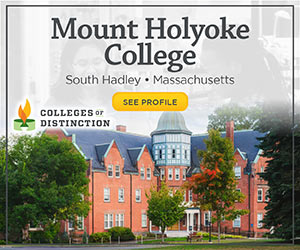The Top College Search Sites for 2025 (Plus One That’s Different)
Searching for the right college can feel overwhelming. With so many platforms promising perfect matches, scholarships, and rankings, where do you even begin?
We’ve rounded up 6 of the most popular college search tools in 2025—comparing what they offer, what they cost, and how they help students. At the end, we’ll also show you how Colleges of Distinction takes a different approach to helping students find schools that truly fit.
1. Niche
Best for: Quick rankings and student reviews
Features: School rankings, student reviews, filtering by major, test scores, diversity, etc.
Pros: Fast, visually clean, includes scholarships and housing info
Cons: Heavily monetized—expect lots of lead capture and promoted schools
Free or Paid: Free to use
2. BigFuture (College Board)
Best for: College planning + test-related tools
Features: College search, cost calculators, scholarship listings, SAT/AP planning
Pros: Trusted source, detailed academic data, integrated with College Board accounts
Cons: Less modern UI, can be confusing to navigate for casual users
Free or Paid: Free
3. Cappex
Best for: Estimating admissions chances
Features: College match quiz, merit aid calculators, scholarship search
Pros: Custom recommendations, “What are my chances?” tool
Cons: Lead generation focus, limited transparency in how results are ranked
Free or Paid: Free with account required
4. CollegeVine
Best for: Students aiming for highly selective schools
Features: School comparisons, admissions calculator, essay guides, live Q&A
Pros: Strong focus on GPA/test score data, lots of essay help content
Cons: May not be as helpful for students exploring less selective schools
Free or Paid: Mostly free with optional paid essay reviews
5. Princeton Review
Best for: Test prep + traditional rankings
Features: School rankings, SAT/ACT prep, quiz-based college matcher
Pros: Longstanding brand, detailed testing advice
Cons: Heavily test-prep focused, less helpful for holistic search
Free or Paid: Free (test prep services are paid)
6. Unigo
Best for: Scholarship searches + student reviews
Features: College match, essay tips, and large database of scholarships
Pros: Large volume of student-written content
Cons: Dated user interface, some outdated info, ads throughout
Free or Paid: Free
✨ Why Colleges of Distinction Is Different
Most college search sites prioritize rankings, test scores, or who pays the most for visibility. Colleges of Distinction takes a different approach.
We spotlight schools that excel in teaching, community engagement, and outcomes—especially for students who want a supportive, well-rounded experience, not just prestige.
- 🎯 No rankings—just recognition for quality
- 🎓 Focus on personalized fit, student success, and outcomes
- 🔍 Free student account with access to 1,000+ scholarships
Create Your Free Student Account
Written by Tyson Schritter, College Advising Contributor at Colleges of Distinction.
Last updated: April 2025





